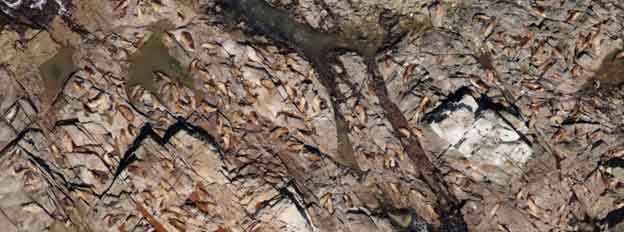 |
| The NOAA Twin Otter plane we will be flying in for the 2017 Steller sea lion aerial survey. Photo credit: NOAA Fisheries |
June 21, 2017 — It is impossible to know exactly how many Steller sea lions are in the ocean. Luckily, the sea lions converge every summer on shore to give birth, mate, and rear newborn pups. For us researchers, this is a fantastic opportunity to count how many are on shore every year.
However, we must conduct our survey within a three week window. The timing has to be just right to ensure females have given birth. Wait too long and the animals (including newborn pups) will begin to disperse.
On top of the time constraint, we have 2,500 miles of coast to survey, from southeast Alaska through the Aleutian Island chain.
Collecting Information from the air
With the help of NOAA’s Aircraft Operations Center, we fly over the Steller sea lion rookery (where most of the pups are born) and haul-out sites in a Twin Otter plane.
Cameras mounted to the belly of the plane take high-resolution images of the sites below. Because it would take more than three weeks to survey all of the beaches, islands, and offshore rocks of Alaska, we alternate between the eastern (southeast Alaska through Kodiak) and western (the western Gulf of Alaska and Aleutian Islands) halves each year.
This year we are going to fly over southeast Alaska, Prince William Sound, the Kenai Peninsula, and Kodiak Island. We will start our survey in Sika on June 26 and end near Kodiak on July 10. Technology helps us cover more groundOur group also uses unmanned aircraft to survey Steller sea lions, primarily in hard-to-reach sites of the Aleutian Islands. This survey is done off the U.S. Fish and Wildlife research vessel Tiglax when we are surveying from the Twin Otter. See this link for more information. Analyzing collected dataAt the end of the survey, two scientists will independently count every sea lion in the 1000s of high-resolution images that we took.
|


